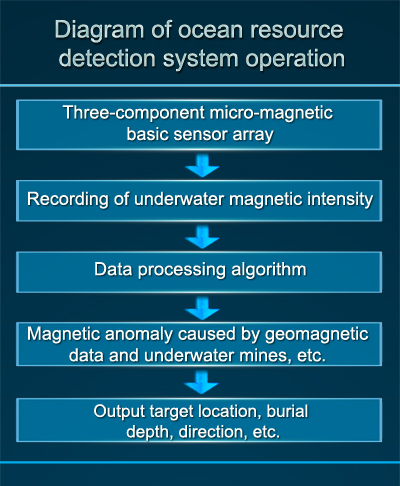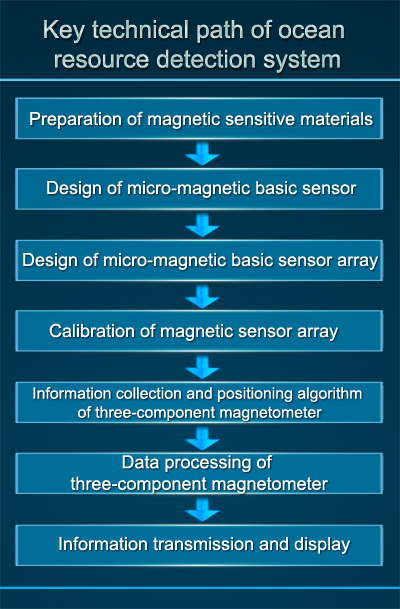![]() Background analysis:
Background analysis:
The ocean is hailed as the blue treasure trove. As the land resources become increasingly scarce, the development and utilization of marine resources have been attracting more attention, especially the exploration and mining of deep-sea mineral deposits. The data have shown that the offshore continental shelf oil resources in China are about 24 billion tons, the natural gas resources are about 14 trillion cubic meters, and the coastal placer reserves are 3.1 billion tons. Since 2003, great progress has been made in China’s underwater resource detection technology, and more than 10 advanced offshore detection equipment that can work in deep sea areas have been built. The detection accuracy has been improved, and various technologies have been developing. The exploration drilling water depth ranges from shallow water, deep water and the deep sea area. For example, the maximum submerged depth of manned submersible "Jiaolong" of China can reach more than 7000m. The commonly used technologies in underwater resource exploration in the past include deep sea hard rock sampling drilling rig prospecting technology, hydraulic impact underwater prospecting technology, gravity columnar prospecting sampling technology, etc. However, these technologies require contact mining, which consumes a lot of time, financial resources, and the results are not ideal. Now, Guochuang Portable Three-component Magnetometer is adopted to pre-determine the seabed based on magnetic anomalies, and the relevant model algorithms can be used to determine the existence of seabed resources based on the magnetic anomaly information. Compared with the proton magnetometer, Guochuang Three-component Magnetometer has a faster response speed and higher gradient tolerance; compared with the fluxgate, Guochuang Three-component Magnetometer has a faster response speed.
![]() Principle:
Principle:
The magnetic anomaly target contains materials or currents with ferromagnetic characteristics (such as iron, cobalt, nickel, etc.), and the magnetic field strength is inversely proportional to the target distance cube, H∝M/R3. We use Guochuang Micro-magnetic Basic Sensor Array to detect the magnetic anomaly information caused by the ferromagnetic target, and determine the feature information of the ferromagnetic target according to the corresponding model algorithm. The rocks and ores in the ocean have different magnetic parameters, which can produce different magnetic fields. It causes the earth's magnetic field to change in local areas and geomagnetic anomalies. Guochuang Three-component Magnetometer is used to identify and study these magnetic anomalies, and then the magnetic ore bodies and studied geological structures can be found in the seabed.
![]() Technical solution:
Technical solution:
Guochuang Portable Three-component Magnetometer is an absolute measurement recorder that measures and records the geomagnetic field H (horizontal field intensity), Z (vertical field intensity) and B (total field intensity of the earth) at a single point or continuous points. The equipment is used to detect and collect the magnetic anomaly signals in the ocean, and the magnetic anomaly information corresponding to the ferromagnetic target such as iron ore, energy and other important information such as the presence or absence, burial depth, and distribution direction of the magnetic object can be reversed through related models and algorithms.
Guochuang Three-component Magnetometer is mainly composed of Guochuang Micro-magnetic Basic Sensor Array, which has the potential and advantages to replace traditional magnetic sensors, especially in the field of geological prospecting.


![]() The main components of the system:
The main components of the system:
1. Guochuang Three-component Magnetometer is composed of micro-magnetic basic sensor array, communication module, digital signal unit, etc.;
2. The micro-magnetic basic sensor array is installed in Guochuang Three-component Magnetometer;
3. Related algorithms include: micro-magnetic basic sensor array calibration, environmental noise suppression, processing of magnetic anomaly targets small signal, etc.;
4. Data processing: collection of data and information such as micro-magnetic basic sensor array single point data and magnetic anomaly diurnal variation;
5. Terminal display: display the working status and parameter information of Guochuang Three-component Magnetometer.
